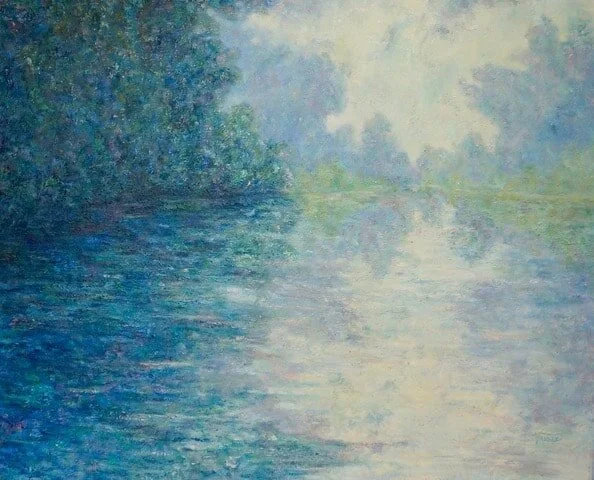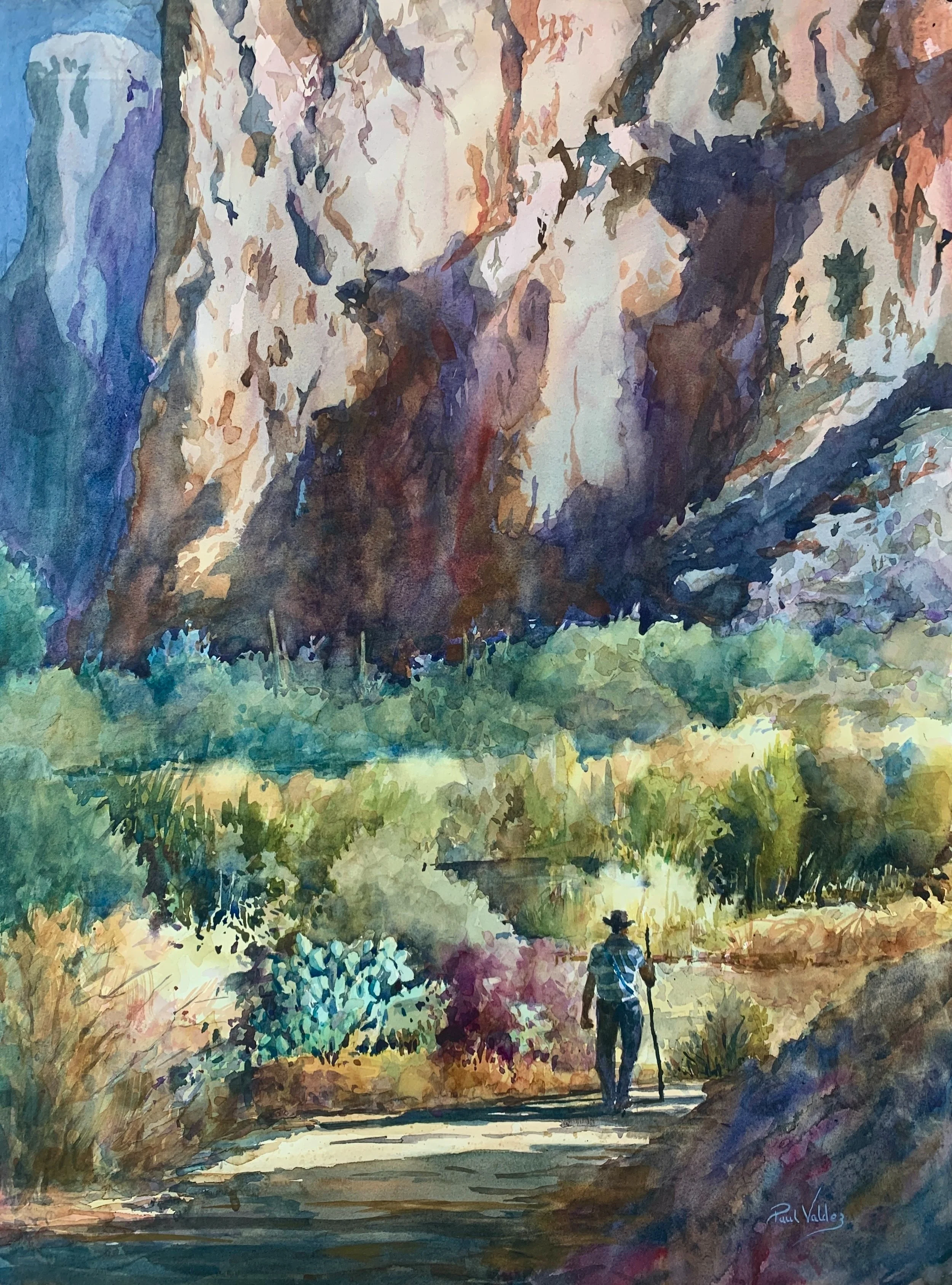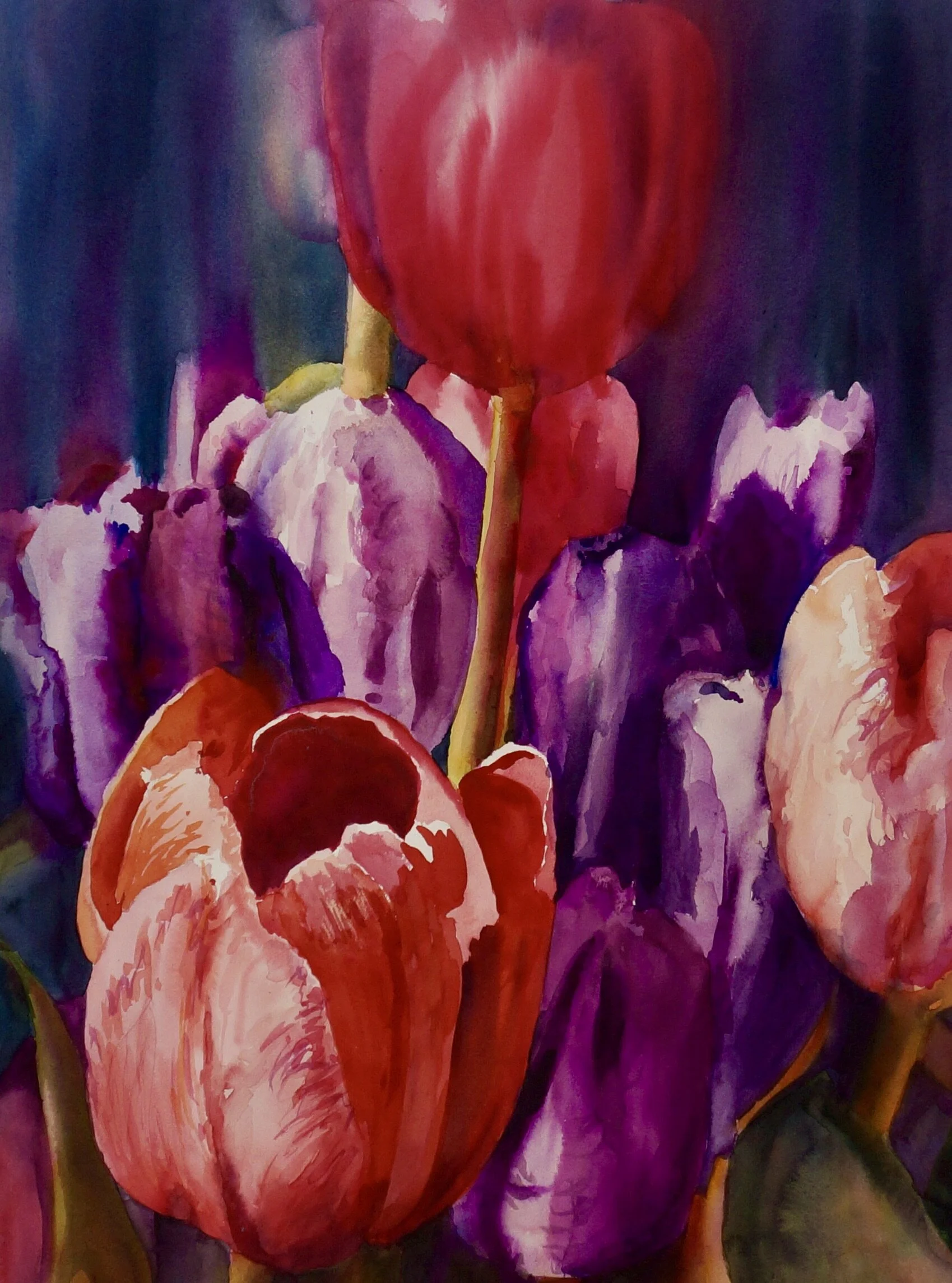Part 2: Materials + Tools | Do Not Be Afraid of Watercolor Series
Welcome to the Do Not Be Afraid of Watercolor Series. In this video we learn about the tools and materials you need to be successful on your watercolor journey.
Watch the video for details and then find your shopping list in the description below. Let’s get started!
Good morning!
My name is Paul Valdez, and I have been a professional watercolor artist for over 30 years.
I've also been an instructor in watercolor for over 15, and I’d like to welcome you, to the Do Not Be Afraid of Watercolor class.
Here is your materials shopping list:
Tools + Materials:
PALETTE:
- John Pike Palette | 20 wells
PAPER | Most important to invest in now
- Arch 140 lbs paper (ideal)
- 90 lbs (thin "whimpier")
- 300 lbs (thicker)
**note** do not go to Michaels or Hobby Lobby and buy a pad of watercolor paper
BRUSHES:
Unlike paper, it is okay to purchase brushes on the cheaper end.
- Princeton brushes are synthetic and work pretty well
- Different brush types you see in this video: square brushes, wash brushes, quill brushes, squirrel brushes, round brushes
- Kolinksy Sable brushes are really great quality but also expensive (don't recommend these until you are more comfortable with watercolor painting)
SPONGES:
- Cellulose sponge cloths (durable and reusable)
- Puppy pads
SPRAY BOTTLES:
- Small Holbein bottle
- Aqua Mist
COLOR WHEEL
VIDEO TRANSCRIPT:
Hello, good morning. And welcome.My name is Paul, and this is the do not be afraid of water color video.
This is my very first video and I think you so much for joining me.I'm hoping what I have to teach you will help you become a good beginner. A professional beginner. Help you,not be afraid of watercolor. I talk to so many people and they are deathly afraid of water color and I want you to learn the right way.I have learned the wrong way and I'm helping you to learn the right way.
So we're going to discuss my watercolor supplies today. We're going to start with my palette. This is a John Pike palette. We have 20 Wells, my colors go from cool to warm and you notice we have a highside and low-side. I like being able to drag the paint straight out of the well, right onto the palette. Instead of having to dig it out. So, that really is a pretty cool thing. We'll talk more about the paint in subsequent videos.
Paper:
I use arches hundred forty pound paper.There's also a 90 pound and a 300-pound 90s. These area little bit fragile for me. A little wimpy.This hundred forty pounds right in the middle. It's not too bad depending on how wet it gets.Paint and everything will depend on whether you have to either staple or tape,your paper down on a board.I also have a 300 pound paper.Obviously the double this and you usually don't have to tape that down.Now, Arch is a good paper because it comes sized which means that when you put the paint on the paper it doesn't immediately just sink in its sits on top. Just for a moment to allow you to move it around. The other thing I like is that you can use both sides of Arches, just really do me a huge favor of do not go out to Hobby Lobby or Michaels and buy a pad of watercolor paper. That'll kill you. I promise you that'll just frustrate you more than anything in the world. So let me move on a little bit to brushes.
Brushes:
Unlike paper, you can get a cheaper,kind of synthetic brushes that are pretty good. These Princeton brushes are synthetic and they work pretty well. I have a couple of wash brushes, square brushes,quill brushes. You'll notice the body in these quill brushes and that it holds a lot of water. These are squirrel. There's also a combination squirrel and synthetic and a synthetic. And then these are my round brushes.I use. And these are both since synthetic brushes.There are some very, very expensive kolinsky Sable brushes that you can get that.I wouldn't recommend until you are real comfortable with watercolor and you're ready to move ahead.
Sponges:
I have a couple sponges over here next to my water wells,and I use those to just dab my brush on to remove excess water with these.Are these go in my palette. Cover goes on top too. You'll notice that my paint is nice and moist.I put these little sponges in wet them. Put the cover on and it keeps the palette paint. Nice and moist. And I really like them. What those are, are these Cellulose sponge cloths. Durable and reusable, how about that?Their package of three 7 by 8 inches there,really a good thing to use. I have a couple water containers. That's all personal preference. The only thing I say to you is, if you can't see the bottom of your water container, that's when you need to change your water up.
Until then you're just fine.
Spray bottles:
I've got a couple.I got a small little holbein one here has a nice little spray. Handy. Then I have a bigger one here. This is called Aqua Mist and it puts out a nice, fine mist, and I really like that. Water colorists need spray bottles. So, I highly recommend investing in one or two.
This color wheel that I have here is pretty simple. So only four dollars or so. And what it is is just for reference. If I need to see the complement of a color and i’m not thinking of it at that moment. These are great to have to be able to use for reference. On the bottom of everything that you see here are these puppy pads. And on the backside, they've got this blue liner. And, of course, on the inside real absorbent area, and I tell you, they've taken every mess that I can throw at them.
They're pretty awesome. I use these all the time and what's really good is there they come in handy when I don't have a sponge or a paper towel at that moment. I just dab it right on the pad and it works really,really well.
All the supplies that you see here will be in the description below. I ask that you, please subscribe, share and like I hope you learn something for this video.
Next time we will talk about watercolor paint and some of the properties of each one.
Please remember that it’s so important that you do not skimp when you're first starting out, you'll just fight yourself and you will be frustrated and you will quit.So pretty much begging you to at least by good paper.
Not so much on the brushes and there are some student quality paints that are are pretty good. And once you get better, you can start investing in more expensive material, but paper most important, and I would definitely go there. I appreciate you. Thank you so much for joining me, and we will talk to you next time.













